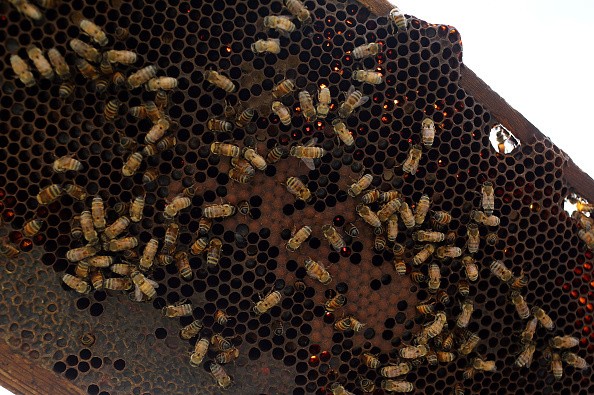When the hive of honey bees is threatened by a parasite, they boost their social distancing, as per a new study led by an international team of researchers from UCL and the University of Sassari in Italy.

Social Distancing in Honeybees
The research, which was published in Science Advances, showed that when honeybee colonies are infested with a deadly mite, they change how they utilize space and interact with their nestmates in order to increase the social gap between young and elderly bees.
"Here we have provided the first evidence that honeybees modify their social interactions and how they move around their hive in response to a common parasite." stated co-author Dr. Alessandro Cini (UCL Center for Biodiversity & Environment Research, UCL Biosciences).
Honeybees are a sociable species that benefit from sharing tasks and interactions like mutual grooming, but when such social activities raise the danger of infection, the bees seem to have evolved to balance the risks and benefits by employing social distancing.
Among animals, social distancing has been observed in a variety of species separated by millions of years of evolution, ranging from baboons that have a lower chance to clean individuals with gastrointestinal infections to ants which pathogenic fungus infect, downgrading themselves to the outer part of anthill community.
The Study
The current research looked at whether the ectoparasite mite Varroa destructor caused changes in social order in honeybee colonies, which might make the parasite spread less. The Varroa mite is one of the principal threats of honeybees since it produces a multitude of adverse effects on bees at the individual and colony level, including virus transmission.
Honeybee colonies are divided into two sections: the foragers' outer compartment and the nurses', queen's, and brood's interior compartment.
This spatial segmentation within the colony results in a lower frequency of contacts between the two compartments than interactions within each compartment, allowing the most valuable individuals (queen, young bees, and brood) to be sheltered from the outside environment and hence disease arrival.
The researchers discovered that if a colony was contaminated with the Varroa mite, behaviors, foraging dances, which may boost mite transmission, happened less often in the inner portions of the hive if it was infested. Cleaning activities became increasingly focused in the center hive, according to the researchers.

Honeybees' Response to an Infestation
In reaction to an infestation, foragers (older bees) go to the nest's perimeter, while the young nurse and groomer bees move to the nest's core, increasing the distance between the two groups.
"The observed increase in social distancing between the two groups of bees within the same parasite-infested colony represents a new and, in some ways, surprising aspect of how honeybees have evolved to combat pathogens and parasites." stated lead author Dr. Michelina Pusceddu (Dipartimento di Agraria, University of Sassari).
Their capacity to alter their social structure and restrict individual contact in response to a disease danger enables them to maximize the advantages of social connections when feasible while minimizing the risk of infectious illness when necessary.
Honeybee colonies are an excellent paradigm for researching social distance and completely comprehending its worth and efficacy.
Related Article : Honeybees Accumulate Airborne Microplastics on Their Bodies: How Does it Affect Them?
For more news, updates about honeybees and similar topics don't forget to follow Nature World News!
© 2025 NatureWorldNews.com All rights reserved. Do not reproduce without permission.





